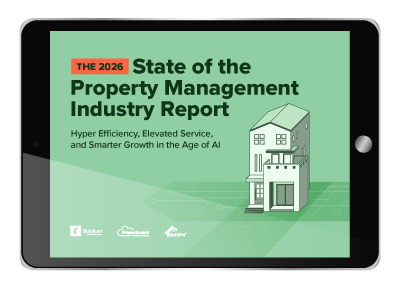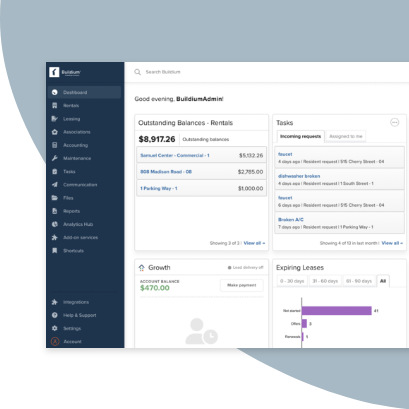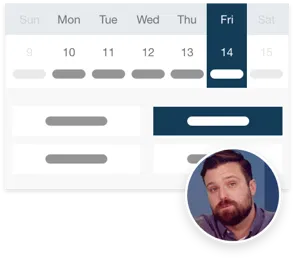Disclaimer: This blog post is meant for informational purposes only and does not constitute legal advice. Consult with a licensed attorney in New Mexico for specific legal guidance.
Finding success as a property manager in New Mexico, starts with having all your important processes and documents in place. One of the most important foundational documents you’ll need is a lease agreement. Taking the time to create thorough agreements can lead to longer leases, the proper legal protections, and a better relationship with tenants.
In this guide, we will delve into the essential elements of a New Mexico lease agreement, how it benefits different parties, and disclosures and regulations you should be aware of. For even more support, you can download our free sample New Mexico lease agreement template and customize it to meet your needs.
Whether you are a seasoned property manager or new to the field, this guide will provide valuable insights to help you create effective, comprehensive lease agreements.
What Is a New Mexico Lease Agreement?
A New Mexico lease agreement is a legally binding contract that outlines the terms and conditions of a rental arrangement between a property owner (or property manager) and a tenant. This document serves several important functions for property management companies in New Mexico.
Lease agreements provide clarity by detailing the rights and responsibilities of both parties. This includes information such as the duration of the lease, the amount of rent, payment due dates, and any security deposit requirements. By defining these terms, both the property owner and the tenant can avoid misunderstandings and disputes.
A New Mexico lease agreement also acts as a protective measure for all parties. It ensures that the property is maintained properly and that rent is paid on time. In case of a breach or dispute, the lease agreement serves as a reference point for resolving issues, potentially through legal avenues if necessary.
The lease agreement also helps to build a professional relationship between the property owner and the tenant. By setting clear expectations and guidelines, it fosters a sense of mutual respect and cooperation, which is important for a successful rental experience.
Who Needs a New Mexico Lease Agreement?
Property managers, property owners, and tenants all benefit from having a well-drafted lease agreement.
For property managers and owners, a lease agreement provides a clear framework for the rental arrangement. It outlines the terms and conditions, such as rent amount, payment due dates, and maintenance responsibilities.
Tenants also benefit from a lease agreement that defines their rights and the property owner’s obligations clearly. It provides them with a sense of security, knowing that the terms of their tenancy are documented and agreed upon. This can include details about the duration of the lease, rules for property use, and procedures for addressing issues or disputes. As a legal document, the lease agreement clearly outlines their rights as tenants.
Not having a lease agreement can lead to potential risks for all parties involved. Without a written contract, there is a higher chance of disputes over rent payments, property maintenance, and other important aspects of the rental arrangement. This can result in legal complications and financial losses.
Types of New Mexico Lease Agreements
There are several types of New Mexico lease agreements, each tailored to different rental situations. Understanding these can help property managers choose the right agreement for their needs.
Fixed-Term Lease Agreement: This is the most common type of lease agreement, typically lasting for a specified period, such as 12 months. Both parties are bound to the conditions for the duration of the term, after which the lease may be renewed. Lease agreements for a term longer than one year must be in writing and signed by both parties to be legally enforceable.
Month-to-Month Lease Agreement: This arrangement offers flexibility for both parties, as it renews monthly. Typically, either the property owner or tenant can terminate the lease with a 30-day notice.
Sublease Agreement: This allows a tenant (the sublessor) to rent out all or part of the property to another party (the sublessee). It’s important to note that many primary lease agreements contain clauses prohibiting subletting without the owner’s consent.
Roommate Agreement: This type of agreement is used when multiple tenants share a rental property. It outlines the responsibilities of each roommate, such as rent payments, utilities, and household chores. This helps in avoiding conflicts over the course of the lease.
Commercial Lease Agreement: While our focus is on residential properties, it’s worth noting that commercial leases exist for business rental situations. They have different stipulations and considerations based on the nature of commercial activities.
What Should a New Mexico Lease Agreement Include?
There are several key components that make up a lease agreement. Here’s what to include:
Parties Involved: Every lease agreement should begin by identifying the parties involved. Typically, this includes the owner or lessor (the individual or entity offering the property for rent—this could be a private owner or a property management company) along with the tenant or lessee (the individual or party renting the property). Be sure to use full legal names, eliminating ambiguity regarding the identities of the parties.
Lease Duration Dates: The start and end date of the lease term should be mentioned explicitly. Whether it’s a fixed-term lease (12 months, for example) or a more flexible month-to-month arrangement, defining the duration prevents any uncertainties regarding the lease’s expiration or renewal terms.
Rent and Security Deposit Information: Payment and financing details are one of the most important parts of the agreement. This section should detail:
- Rent Amount: The monthly rent payable by the tenant
- Due Date: The day of the month on which rent is due
- Payment Method: Whether it’s through check, bank transfer, or other means
- Security Deposit: In New Mexico, there is no statutory limit on security deposits. However, the owner must return the deposit within one month of the tenancy’s termination.
- Deductions: Conditions under which deductions can be made from the security deposit, such as property damage or unpaid rent
Occupancy Limits: This section specifies that only the individuals listed on the lease reside in the property. It’s important to include this information to prevent overcrowding and ensure that the property is used in accordance with local regulations.
Property Management Company and Tenant Responsibilities: It’s equally important to outline the duties of both the property manager and the tenant. Property manager responsibilities span all aspects of taking care of a property, from keeping areas up to health and safety standards to collecting rent in a timely manner. Typically, tenants are responsible for keeping the property clean, informing the property manager of any damages, and not engaging in any activity that could damage the property or disrupt neighbors.
Pet Policies: It helps to have a clear pet policy. First, state whether pets are allowed. If they are, specify any restrictions regarding type, size, or breed. Some owners require a separate pet deposit to cover potential damages caused by pets. If pets are allowed, list any rules regarding their stay, such as leash requirements in common areas.
New Mexico Lease Agreement Addenda and Disclosures
Below are key addenda and disclosures that should be part of a New Mexico lease agreement. This list is not exhaustive, so consult a legal professional if you’re unsure about what to include in your own agreements.
Lead-Based Paint Disclosure
For rental units built before 1978, federal law requires the inclusion of a Lead-Based Paint Disclosure. Lead-based paint can pose serious health risks, especially to children and pregnant women. Property managers must take several steps to comply with this requirement, including filling out a lead-based paint disclosure form and providing an EPA-approved pamphlet to tenants.
Owner/Agent Identification
The lease agreement should include the name and address of the property owner or the company authorized to manage the property. This information is important for tenants, who need a contact for maintenance issues, rent payments, or any other concerns related to the property.
Optional Disclosures and Addendums
While not required by New Mexico law, there are several optional disclosures and addenda that property managers may choose to include in their lease agreements:
- Asbestos: Inform tenants if there is any known asbestos in the property and provide safety guidelines.
- Bed Bugs: Outline procedures for reporting and handling bed bug infestations.
- Mold Disclosure: Inform tenants about any known mold issues and provide guidelines for prevention and remediation.
- Non-Refundable Fees: State any non-refundable fees, such as cleaning fees or pet fees.
- Shared Utilities Arrangements: Explain how utilities are shared and billed if the property has shared utility meters.
- Smoking: Specify whether smoking is allowed on the property and any designated smoking areas.
Consequences for Excluding Mandatory Disclosures
Failing to include mandatory disclosures in a lease agreement can lead to serious consequences for property managers and owners. Non-compliance with federal- and state-mandated disclosures can result in fines, legal disputes, and potential lawsuits. Tenants may challenge the lease agreement in court, leading to financial repercussions such as payment for damages or the return of security deposits in full. Additionally, omitting required disclosures can harm the trust between the owner and tenant, affecting future lease renewals or referrals.
New Mexico Lease Agreement Laws and Regulations
When drafting a residential lease agreement in New Mexico, it’s important to include certain disclosures and addenda to comply with federal and state laws. These additions help protect both property managers and tenants by providing transparency and setting clear expectations. Here what to consider:
Security Deposits
States often have specific requirements on security deposit maximum amounts, return time periods, and penalties for failing to comply with these regulations—and New Mexico is no exception. There may also be requirements on where you store security deposits and what you can withhold. Generally, deposits should be returned in a timely manner and portions of the full amount can be withheld for unpaid rent and damages beyond normal wear and tear.
Right of Entry
Regarding an owner’s right of entry, it is considered best practice to provide at least 24 hours’ notice, though state law may require a longer notice timeframe. Owners are typically allowed entry for reasons such as performing repairs, conducting inspections, or showing the property to prospective tenants or buyers. Emergencies, where immediate access is necessary, are often an exception, but be sure to consult New Mexico law for the most current and specific requirements.
Grace Period
New Mexico does not have laws establishing a grace period for rent payments. Rent is due on the date specified in the lease agreement. This means that tenants must adhere to the agreed-upon payment schedule to avoid late fees or other penalties.
Late Fees
New Mexico state law limits late fees to a percentage of monthly rent. Additionally, owners may charge an NSF fee of up to set amount for a bad check. These regulations help protect tenants from excessive fees while allowing owners to recover the costs associated with late or failed payments.
Taking the Next Steps with Your New Mexico Lease Agreement
By understanding the different sections, addenda, and laws tied to New Mexico lease agreement, you can create your own documents that set the parameters for a transparent, positive rental experience.
You can even download our free sample New Mexico lease agreement template as a starting point. You can customize the template to reflect your own policies and the details of each of your properties.


